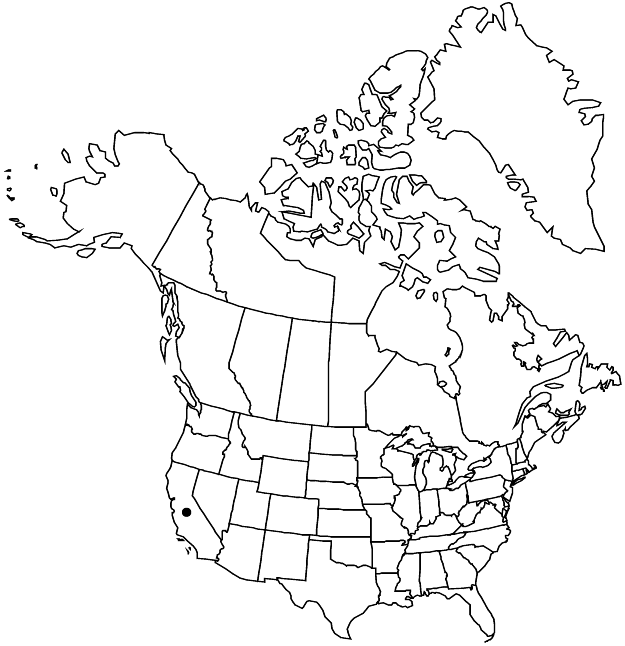Difference between revisions of "Chorizanthe howellii"
Ann. Missouri Bot. Gard. 21: 44, plate 3, fig. 1. 1934.
FNA>Volume Importer |
FNA>Volume Importer |
||
| Line 25: | Line 25: | ||
|distribution=Calif. | |distribution=Calif. | ||
|discussion=<p>Of conservation concern.</p><!-- | |discussion=<p>Of conservation concern.</p><!-- | ||
| − | --><p>Chorizanthe howellii is an octoploid probably derived from an ancient hybrid event involving C. cuspidata var. villosa and perhaps C. valida. It is known only from a dune area north of Fort Bragg in Mendocino County, and is federally listed as endangered.</p> | + | --><p><i>Chorizanthe howellii</i> is an octoploid probably derived from an ancient hybrid event involving <i>C. cuspidata </i>var.<i> villosa</i> and perhaps <i>C. valida</i>. It is known only from a dune area north of Fort Bragg in Mendocino County, and is federally listed as endangered.</p> |
|tables= | |tables= | ||
|references= | |references= | ||
| Line 49: | Line 49: | ||
|publication year=1934 | |publication year=1934 | ||
|special status= | |special status= | ||
| − | |source xml=https://jpend@bitbucket.org/aafc-mbb/fna-data-curation.git/src/ | + | |source xml=https://jpend@bitbucket.org/aafc-mbb/fna-data-curation.git/src/8f726806613d60c220dc4493de13607dd3150896/coarse_grained_fna_xml/V5/V5_950.xml |
|subfamily=Polygonaceae subfam. Eriogonoideae | |subfamily=Polygonaceae subfam. Eriogonoideae | ||
|genus=Chorizanthe | |genus=Chorizanthe | ||
Revision as of 17:42, 18 September 2019
Plants spreading or decumbent to somewhat erect, 0.3–1 × 1–5 dm, villous. Leaves basal or nearly so; petiole 1–4 cm; blade spatulate to broadly obovate, 1–3 × 0.5–1.5(–1.8) cm, villous. Inflorescences with secondary branches suppressed, greenish to grayish; bracts 2, similar to proximal leaf blades only reduced, short-petiolate, becoming linear and aciculate at distal nodes, acerose, 1–5 cm × 5–15 mm, awns absent. Involucres 1, greenish to grayish, broadly cylindric, not ventricose, 3–4 mm, with conspicuous, white, scarious margins between teeth and extending up awn, not corrugate, pubescent; teeth spreading, equal, 0.5–1 mm, awns straight with longer ones 1–2 mm and anterior one mostly 2 mm, these alternating with shorter (0.5–1 mm) ones. Flowers exserted; perianth bicolored with floral tube white and tepals white to rose, cylindric, (3–)3.5–4.5 mm, pubescent nearly throughout; tepals connate 1/4 their length, dimorphic, oblong, truncate and erose to denticulate apically, those of outer lobes longer and wider than inner ones; stamens 9, included; filaments distinct, 3–4 mm, glabrous; anthers pink to red, oblong, 0.6–0.8 mm. Achenes light brown, globose-lenticular, 3–4.5 mm. 2n = (72, 74, 76, 78), 80, (82, 84, 86, 88, 90).
Phenology: Flowering May–Jul.
Habitat: Sandy places in coastal dunes and grassland communities
Elevation: 0-20 m
Discussion
Of conservation concern.
Chorizanthe howellii is an octoploid probably derived from an ancient hybrid event involving C. cuspidata var. villosa and perhaps C. valida. It is known only from a dune area north of Fort Bragg in Mendocino County, and is federally listed as endangered.
Selected References
None.
